How to plant a window box: create a pretty display in five easy steps
Learn how to plant a window box and create a stunning container display that's packed with scent and color
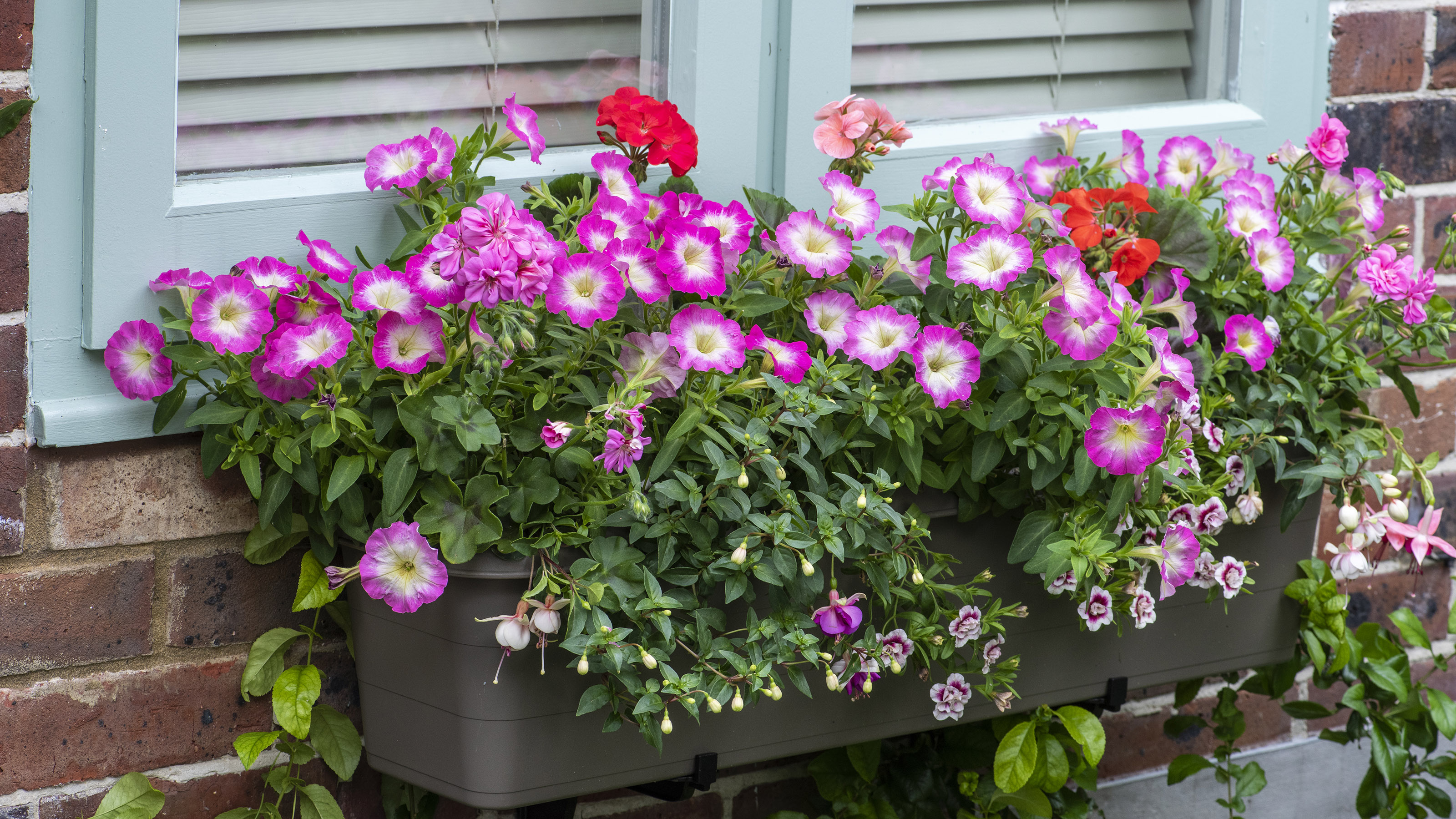

Learning how to plant a window box can immensely enhance the front of your home. And the sky’s the limit when it comes to the planting possibilities and color schemes. From the scent of perfumed flowers wafting in through the window on a warm summer night to the sight of cheery blooms which greet you when you come home after a long day, window boxes can make a stunning addition to any space.
There are so many options for window box ideas. For starters they can be placed anywhere – not just window sills. You can use them to line a patio or path edge or mount them on a wall, balcony or fence. Be sure to follow the 'right plant, right place' principle and you’ll have a greater chance of growing success.
For sunny windowsills, pelargoniums, verbenas and petunias are brilliant. In shady spots, you can still get plenty of color from shade-tolerant nicotiana and calendula. Select a plant for height in the centre, combine with filler plants, and finish with trailers to tumble down the front. You could even add an edible in the mix such as a chive or nasturtium.
Think about choosing your container style to work with the desired area too. Neutral or grey shades are ideal for modern homes, whereas terracotta might work better with traditional vistas. If you're using wooden containers, make sure you line them with plastic first, to prevent rot.
How to plant a window box in five easy steps
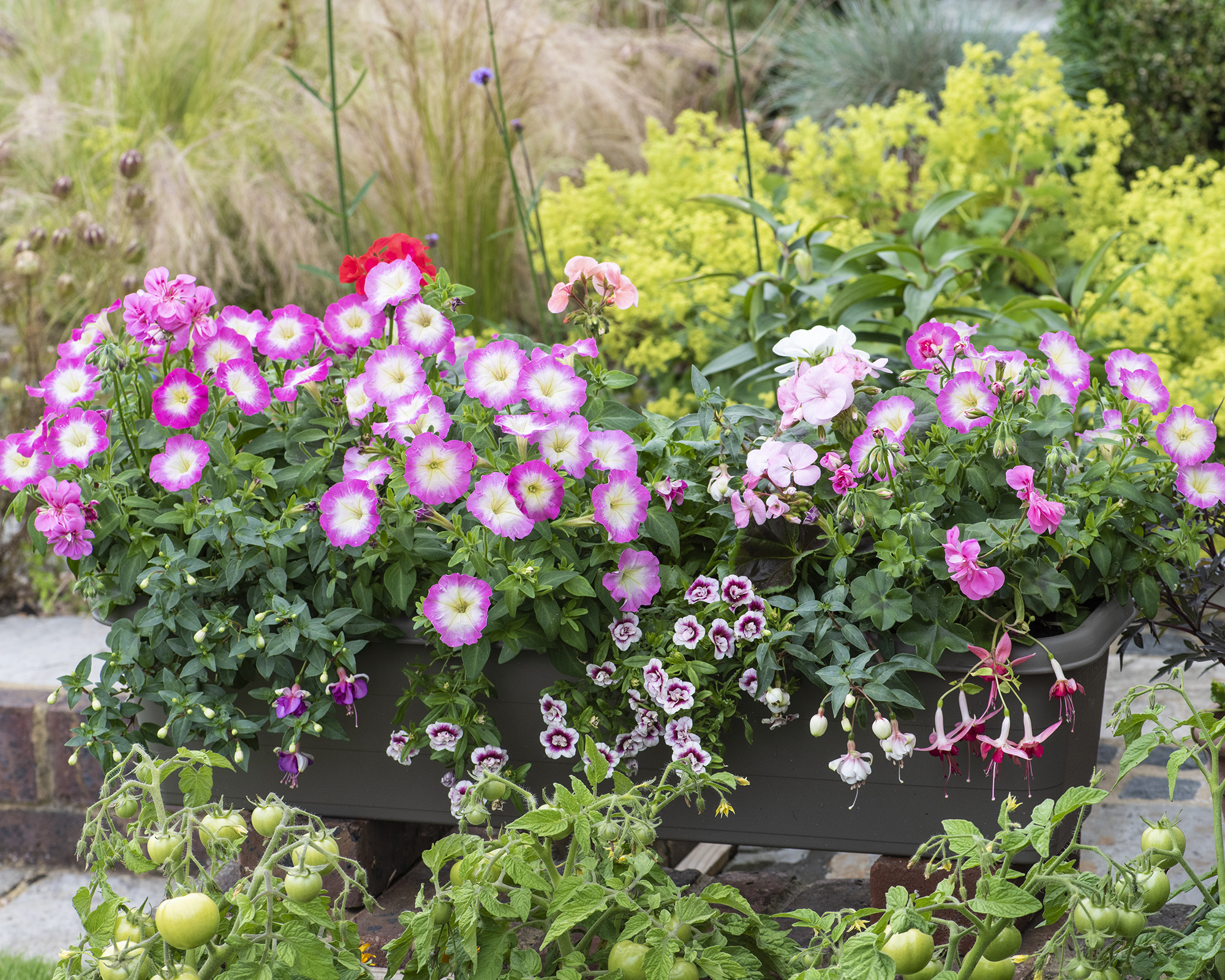
When thinking about how to plant a window box, there are plenty of planting options to choose from. This bright floral display we've created contains some of the best plants for window boxes, all of which will thrive in a sunny spot.
You will need:
- Geranium Bull’s Eye Mixed
- Trailing fuchsias 'Harry Gray' and 'La Campanella'
- Geranium 'Bullseye Mixed'
- Calibrachoa 'Double Pink Tastic'
- Geranium 'Ivy Flair'
- Petunia 'Single Rose' F1
- 75cm long window box
- Gravel
- Compost
Step 1: sort your drainage
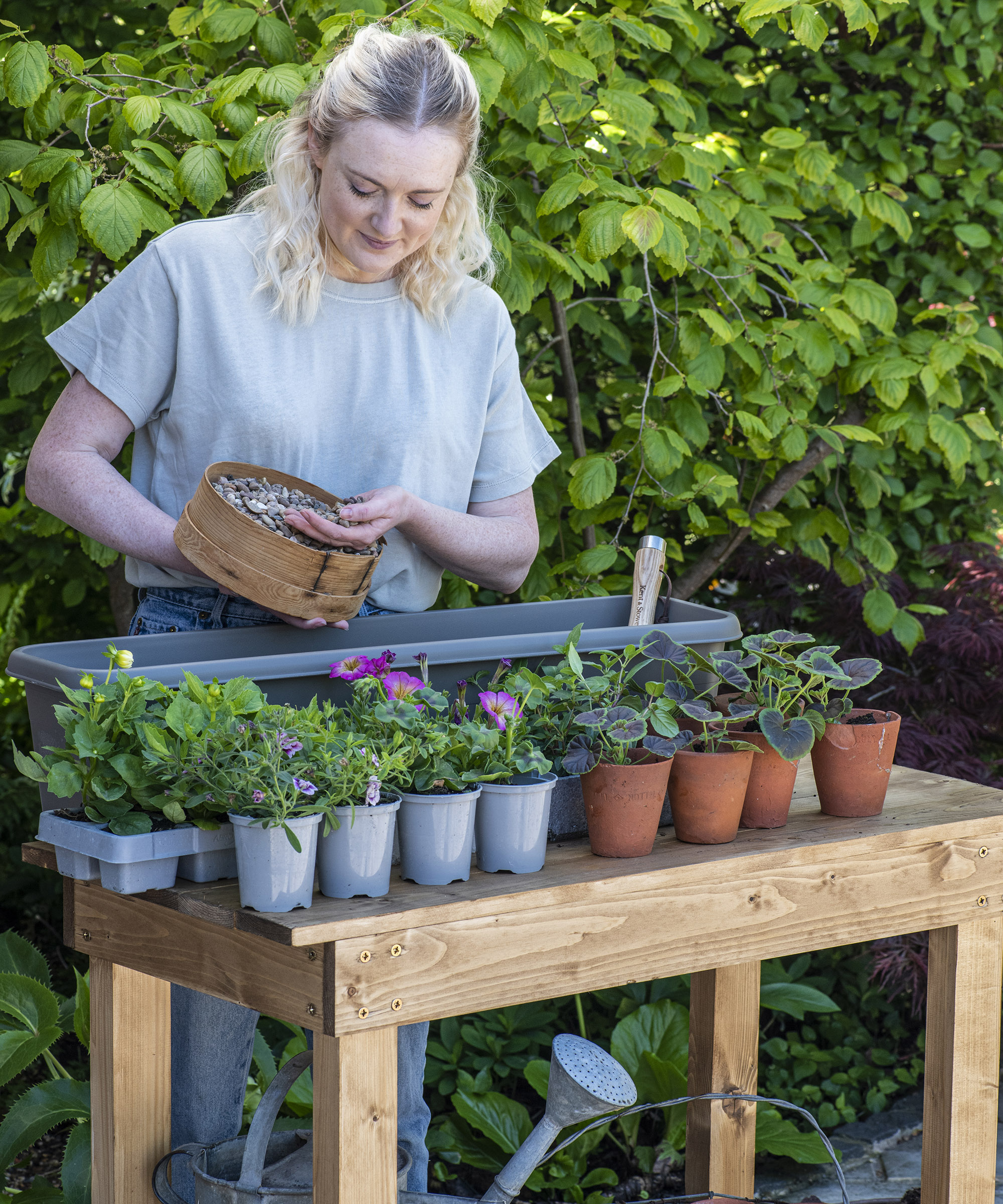
Start by filling your chosen window box with a layer of gravel – this will help with drainage. Then fill the garden planter with a good all-round peat-free compost until it’s an inch or two from the top of the window box. Smooth it out, and level it off, getting rid of any big clumps of earth with your fingertips.
Step 2: arrange your plants
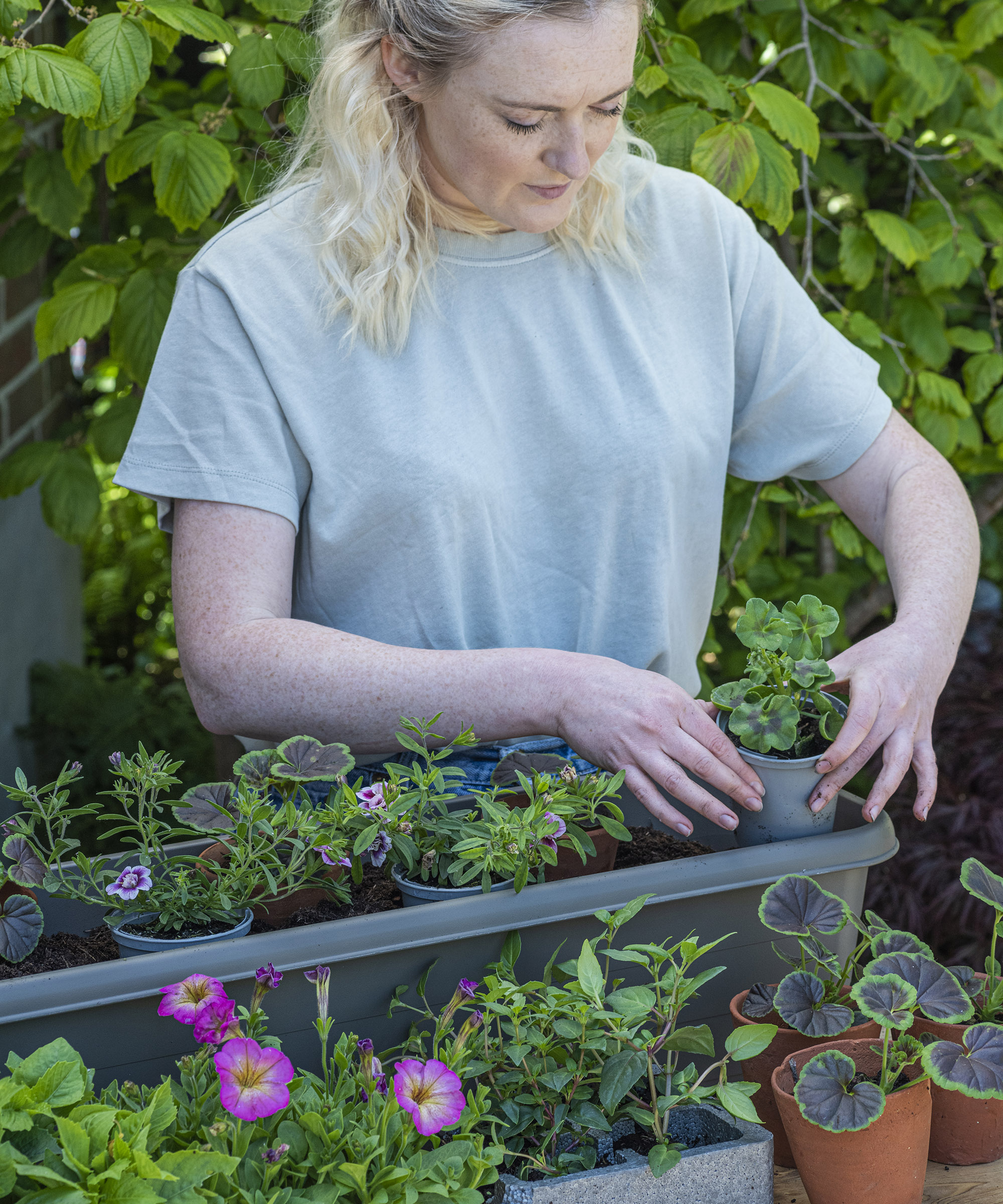
For container gardening ideas, you can arrange your plants symmetrically or in a more informal way. The choice is yours.
For this display, we've arranged the plants evenly in the container to ensure a good fit and a nice layout.
The Geranium Bull’s Eye Mixed (with chocolate colored foliage) is upright so place this at the back. The trailing plants such as Geranium ‘Ivy Flair’, Calibrachoa and trailing fuchsias go at the front as these are going to cascade over the side. Then add your filler plants which are your petunias.
Step 3: get your plants fixed in place
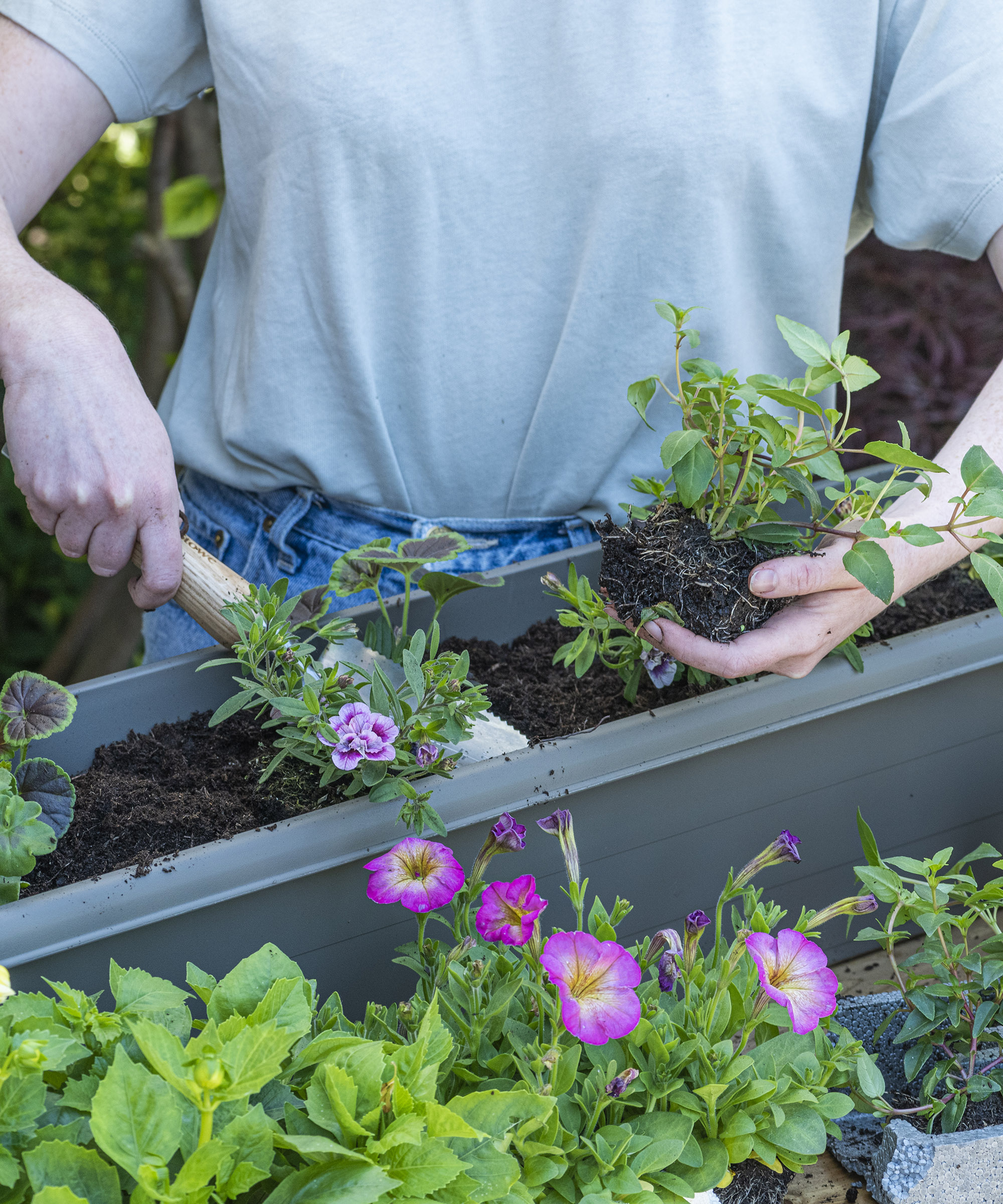
Once you’re happy with the layout, you can start getting your plants in their place. One by one, remove the pots from the window box, and create a hole in the compost where your plant will sit.
It will need to be slightly wider than the pot, and the same depth as the root ball. Remove the pot from your plant and guide the plant into place, gently firming down the soil around it. Carry on with the other plants until everything is in place, then add extra soil to ensure the plants are sitting level with the top of the compost.
Step 4: water plants thoroughly
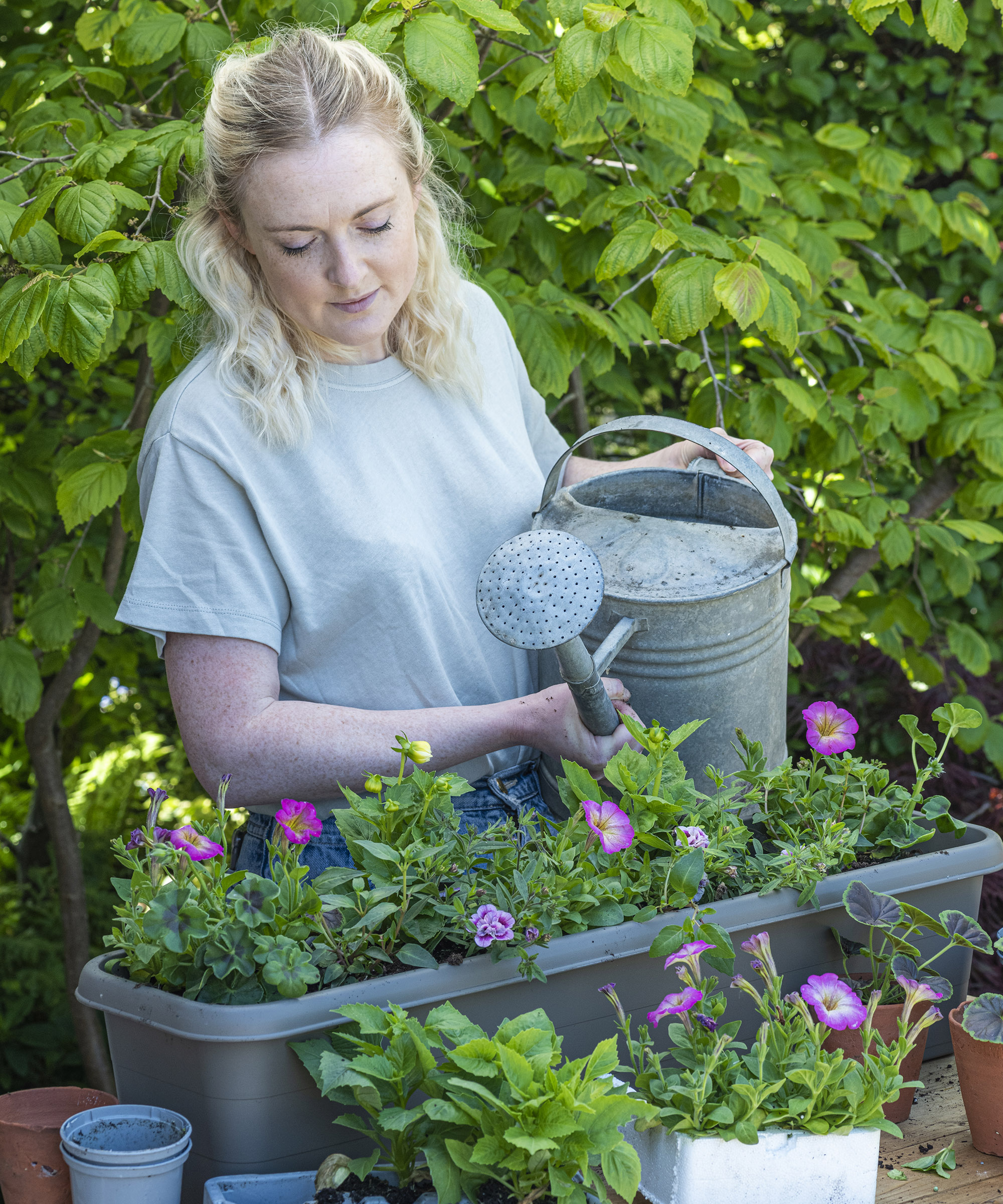
Watering plants is one of the most important steps of how to plant a window box. It's essential you give everything a good drink of water as soon as it's planted to give it the best possible start.
Your plant choices will determine how regularly you need to think about watering your finished window box. But it’s important to remember that container grown plants always require slightly more watering than those in our beds and garden borders.
Step 5: position your window box display
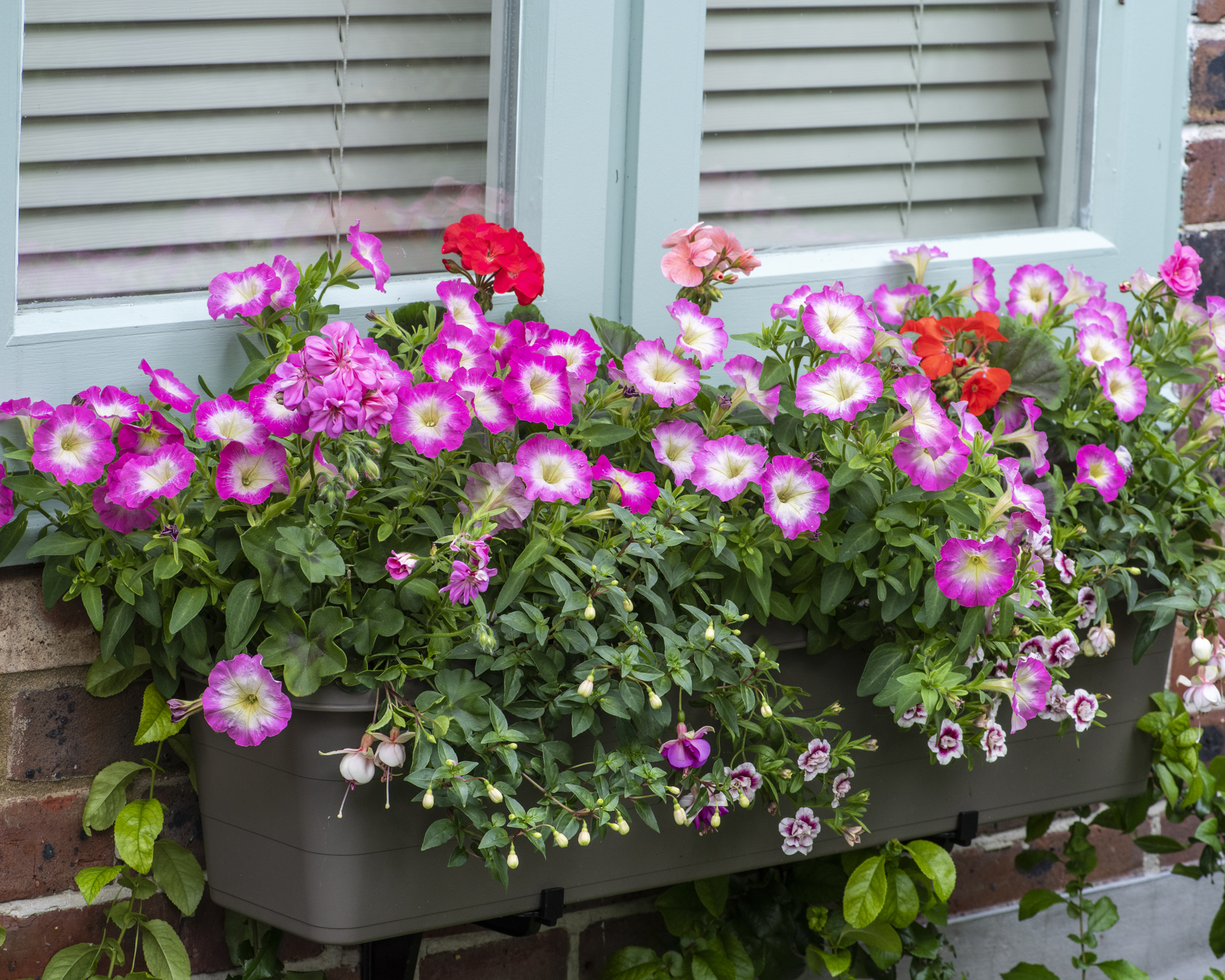
With everything planted and watered, you can now fix your window box into place in your preferred location. Where boxes can’t sit directly on windowsills without being in the way, you may prefer to use brackets to fix the boxes just below the level of the sills. This is safer for upstairs windows, rather than risking boxes falling and causing accidents.
Now you know how to plant a window box, make sure you deadhead any flowers regularly to keep your display looking its best as well as encouraging more growth and therefore a longer period of enjoyment. Our guide to deadheading flowers has lots of useful tips on how to get the best results.

Teresa has worked as an Editor on a number of gardening magazines for three years now. So she is lucky enough to see and write about gardening across all sizes, budgets and abilities. She recently moved into her first home and the garden is a real project! Currently she is relishing planning her own design and planting schemes. What she is most passionate about when it comes to gardening are the positive effects it has on our mental health to grow and care for plants, as well as being great for the environment too and help provide food and shelter for wildlife.
